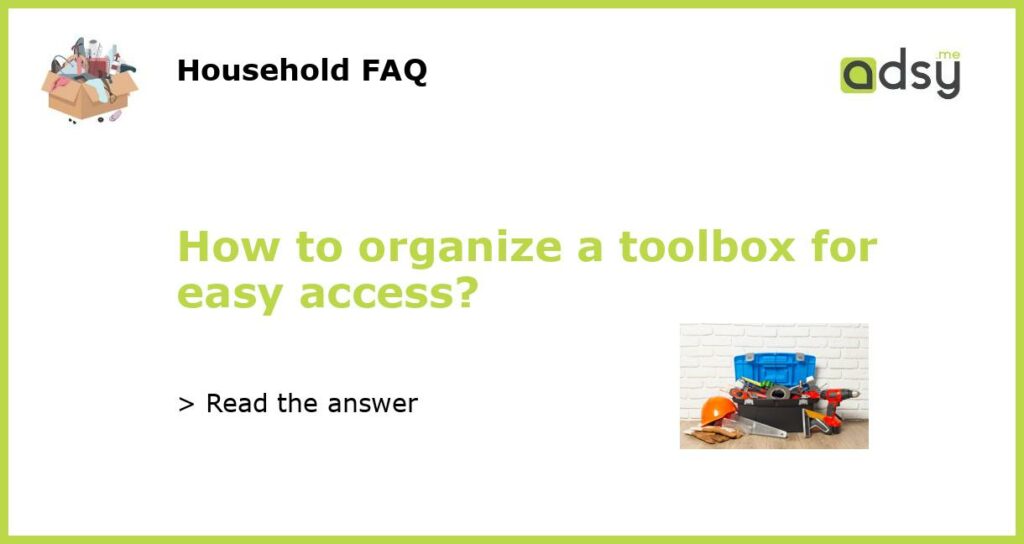Declutter and Sort
The first step in organizing your toolbox for easy access is to declutter and sort through your tools. Empty your toolbox completely and go through each tool, deciding whether to keep, donate, or throw away. This process allows you to get rid of any tools that are broken or no longer necessary.
Once you have decided which tools to keep, sort them into categories based on their function or type. This could include categories such as measuring tools, hand tools, power tools, and fasteners. Having a clear idea of which tools you have and grouping them together will make it easier to find what you need when you are working.
Choose the Right Toolbox
Choosing the right toolbox is crucial for easy access and organization. Depending on the size and type of tools you have, you may need to invest in a new toolbox that suits your needs. Look for a toolbox with compartments, drawers, or trays that can help you separate and organize your tools effectively.
Consider the size and weight of your tools when selecting a toolbox. If your tools are heavy, make sure the toolbox is sturdy and has a comfortable handle for carrying. Additionally, think about the portability of the toolbox. If you often need to bring your tools to different locations, a compact and lightweight toolbox may be more suitable.
Create a Systematic Layout
Once you have your toolbox and sorted tools, it is time to create a systematic layout. This involves organizing your tools in a way that makes sense to you and allows for easy access. Consider arranging your tools based on frequency of use, size, or type.
For example, you could place frequently used tools at the top or in a separate compartment for quick access, while less frequently used tools can be stored in lower drawers or at the back of the toolbox. You may also want to label or color-code your tools to further enhance organization.
Utilize Tool Storage Options
In addition to using a toolbox, consider utilizing other tool storage options to further optimize your organization. Wall-mounted storage racks or pegboards are a great way to keep your frequently used tools within reach and easily visible.
You can hang your tools on hooks or use tool holders specifically designed for different types of tools. This not only saves space in your toolbox but also allows you to quickly spot and grab the tool you need without digging through the entire toolbox.
Regularly Maintain and Update
Lastly, maintaining and updating your toolbox regularly is essential for easy access and organization. Regularly check your toolbox for any damaged or missing tools, and replace or repair them as needed. This will ensure that your toolbox remains functional and efficient.
Additionally, as you acquire new tools, make sure to incorporate them into your existing organization system. This may require adjusting the layout or rearranging some tools to accommodate the new additions.
By following these steps and implementing an organized toolbox system, you can save time and energy by easily accessing the tools you need. Keeping your tools organized not only improves efficiency but also prolongs the lifespan of your tools by preventing damage and loss.






